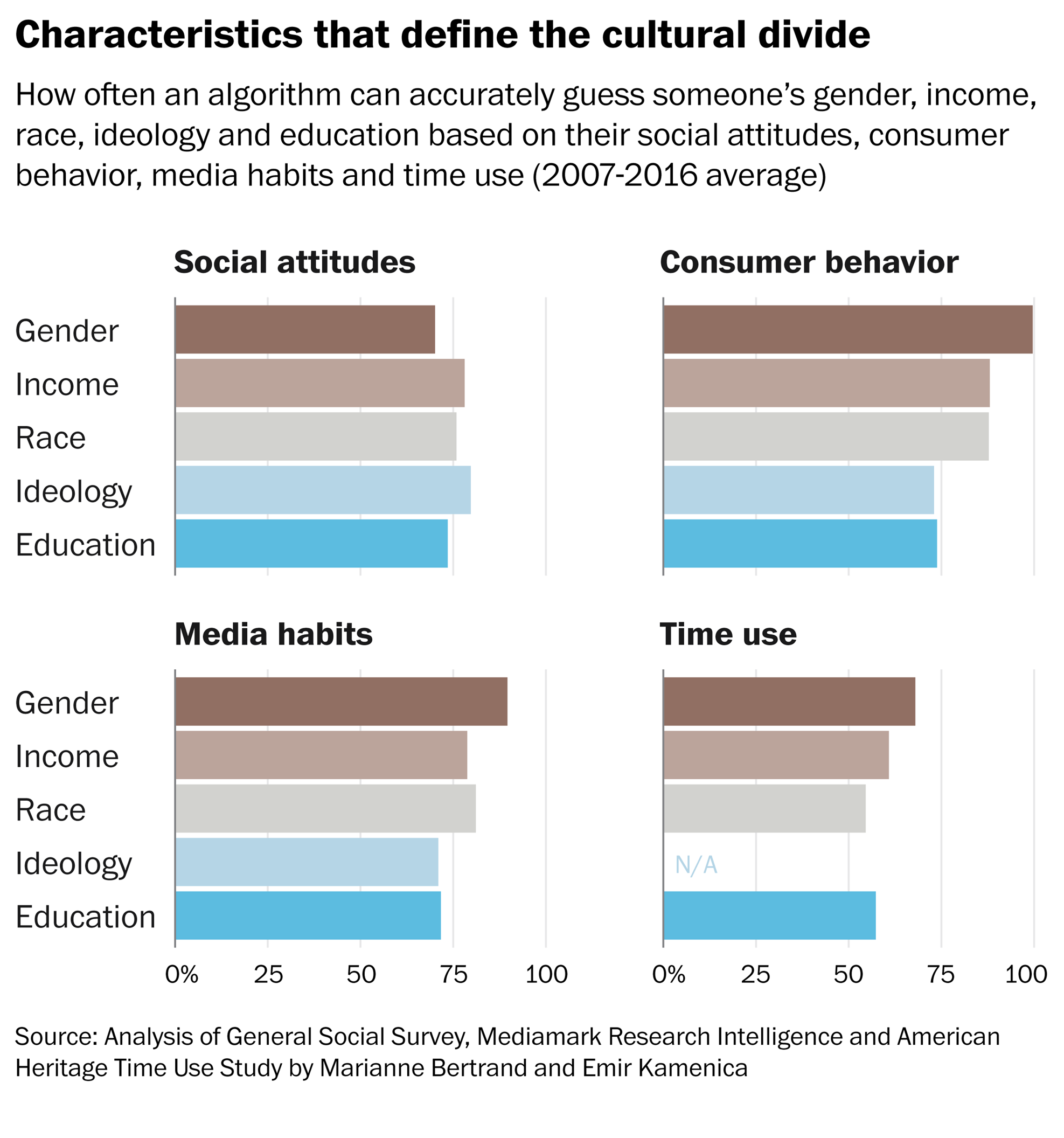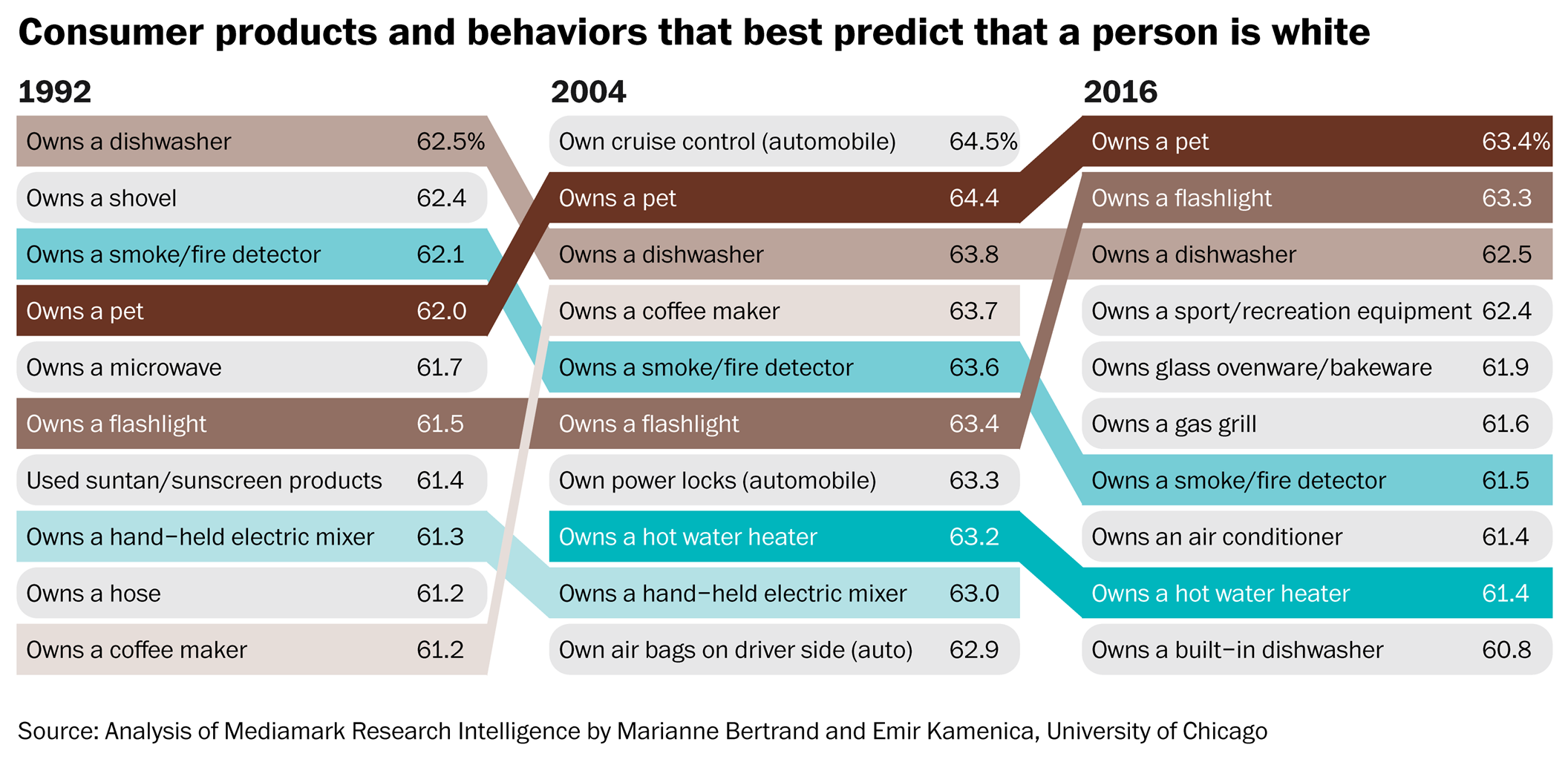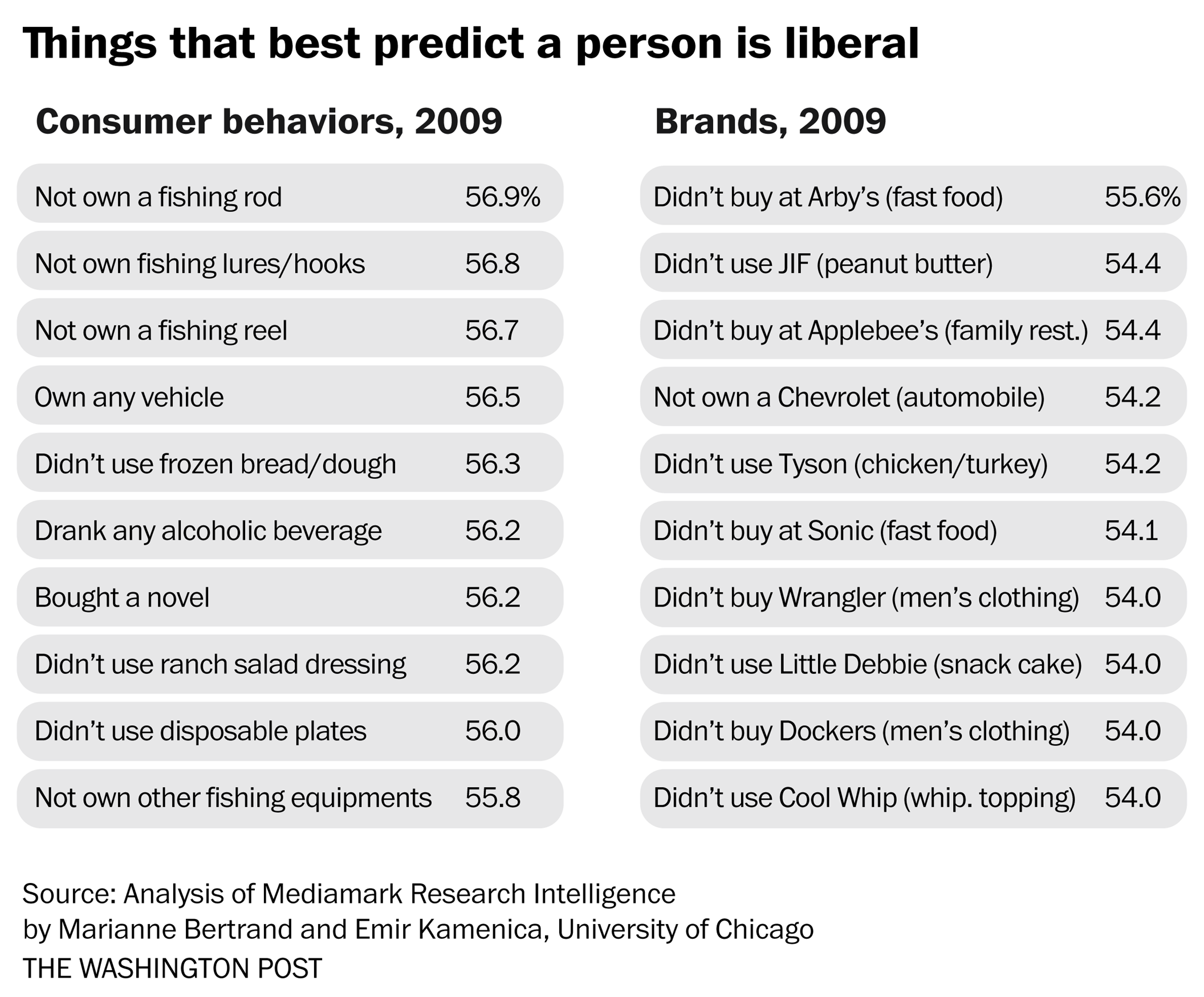
Economists taught machines to guess a person’s income, race, political ideology, education and gender. Their results were released in a new working paper from the National Bureau of Economic Research. The duo trained their algorithms to detect patterns in decades of responses to three long-running surveys, each with between 669 and 22,033 responses per year. Some results are obvious, which indirectly proves that their approach can detect tangible divides. But others are revelatory: White people and black people are almost as different in their spending habits as rich people and poor people are, for example.
The best predictor of whiteness was whether someone owned a flashlight. The top ten predictors of whiteeness were watching “Rudolph the Red-Nosed Reindeer,” “American Pickers” and “The Big Bang Theory”.
The view that best predicted being white in 2016 was “approve of police striking citizens.” Social attitudes and media habits were almost as closely linked to race as consumer behavior was. The racial differences in social attitudes were particularly notable.
In 1992, Grey Poupon mustard predicted income better than any other brand. By 2016, its place as the key signifier of the country’s economic and cultural divide had been taken by Apple’s iPhone. The overlap shows how closely related race and income are, probably because of historical disparities and continuing problems with racial bias.



Auto232
What we buy can be used to predict our politics, race or education